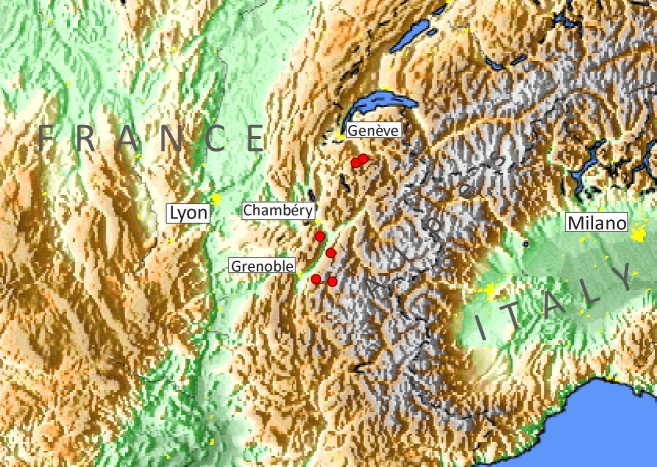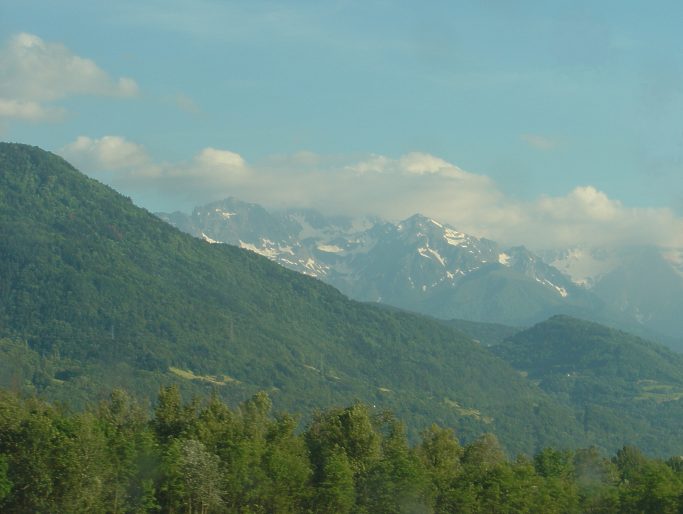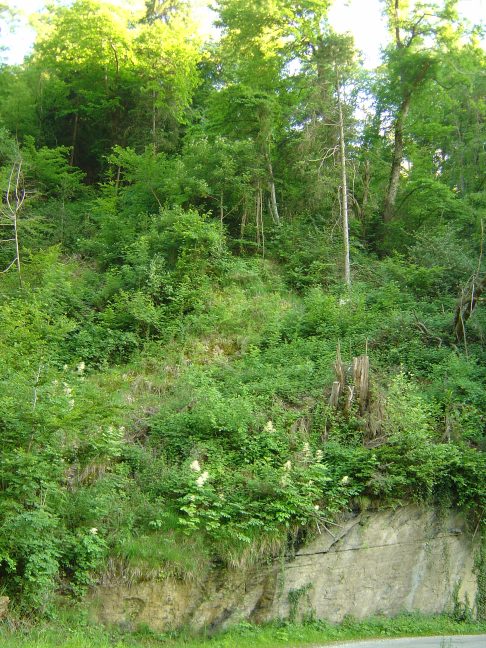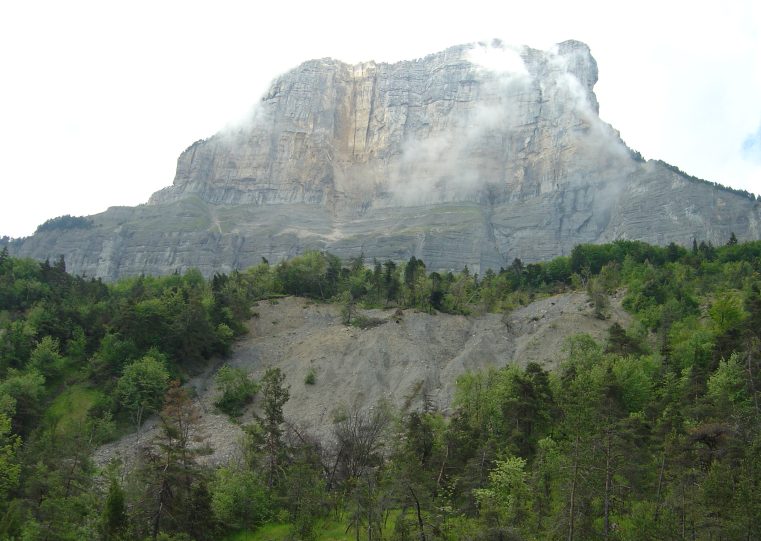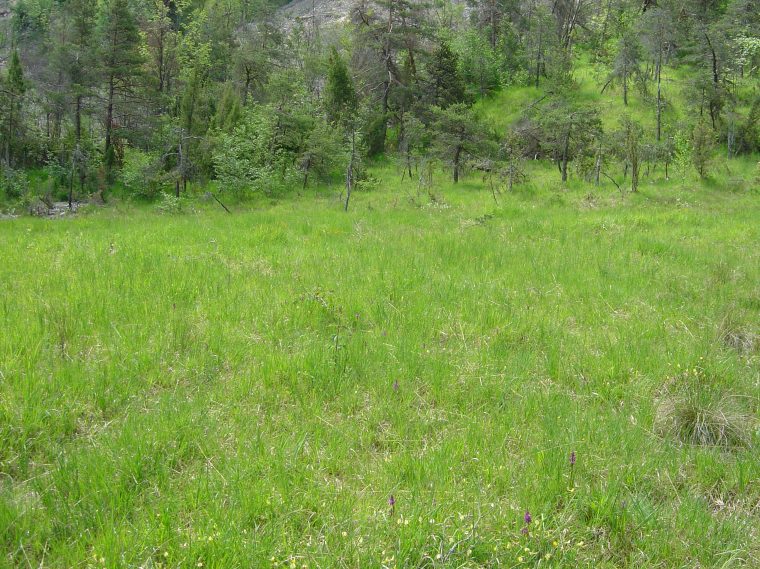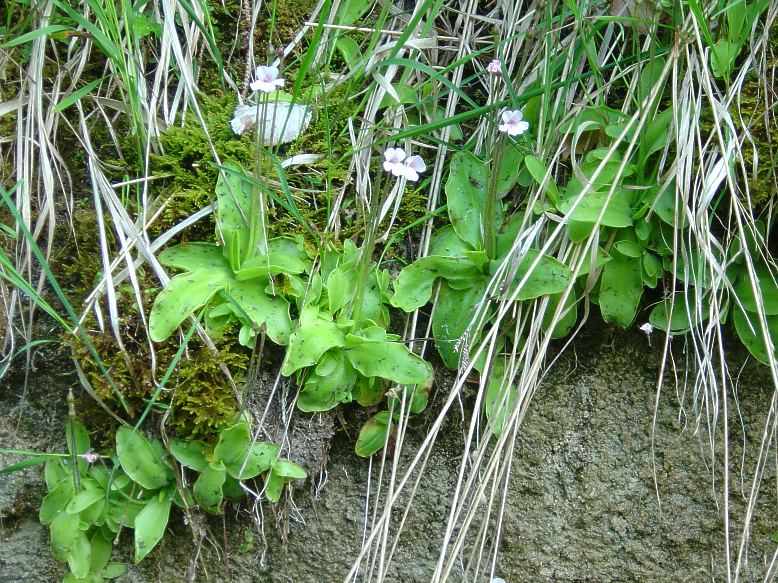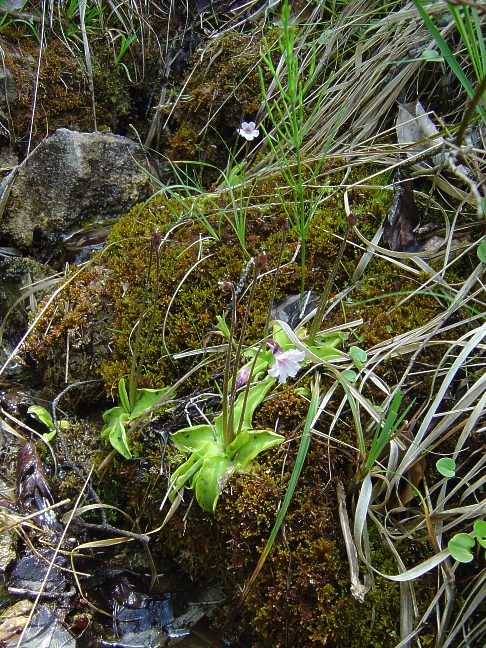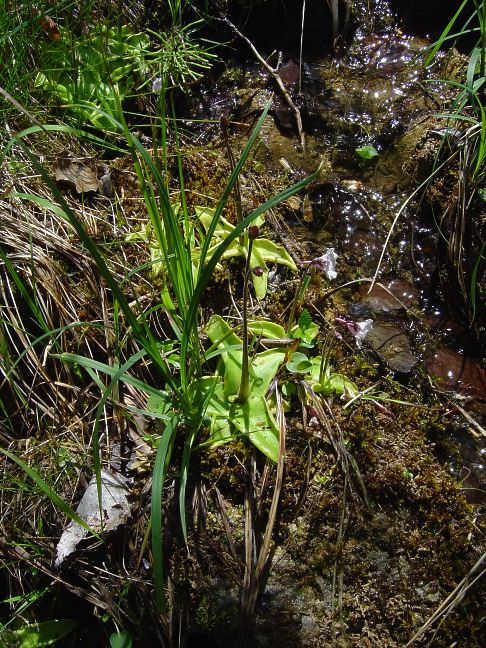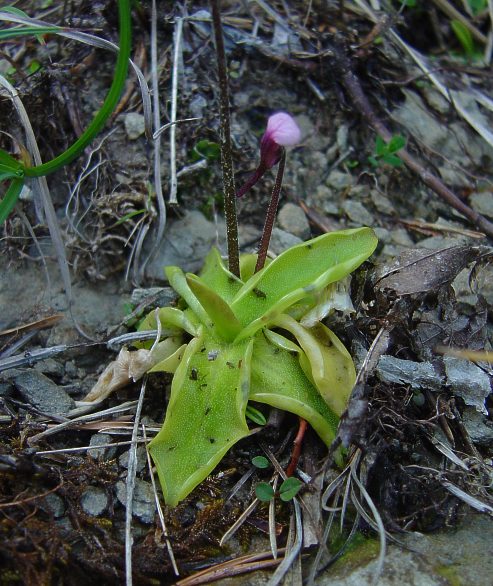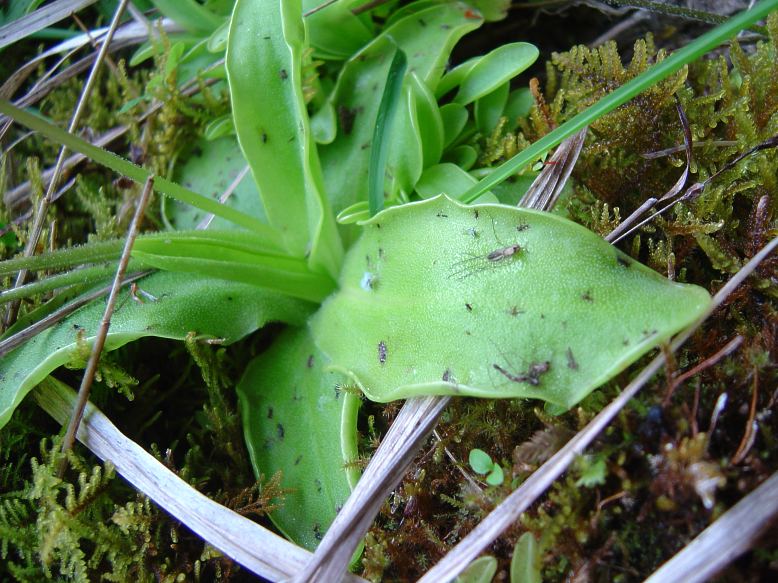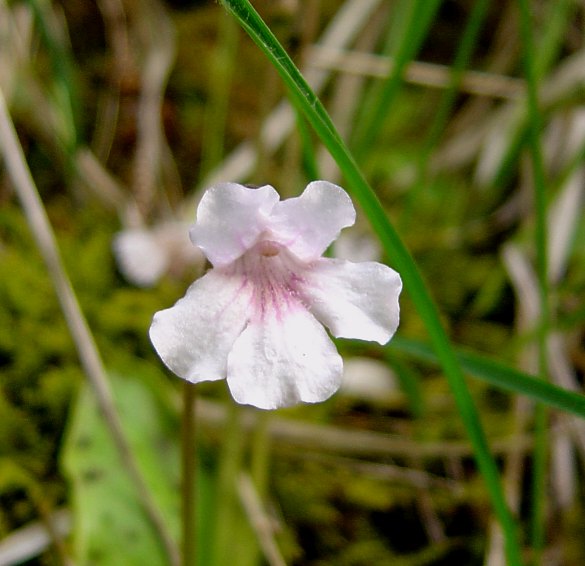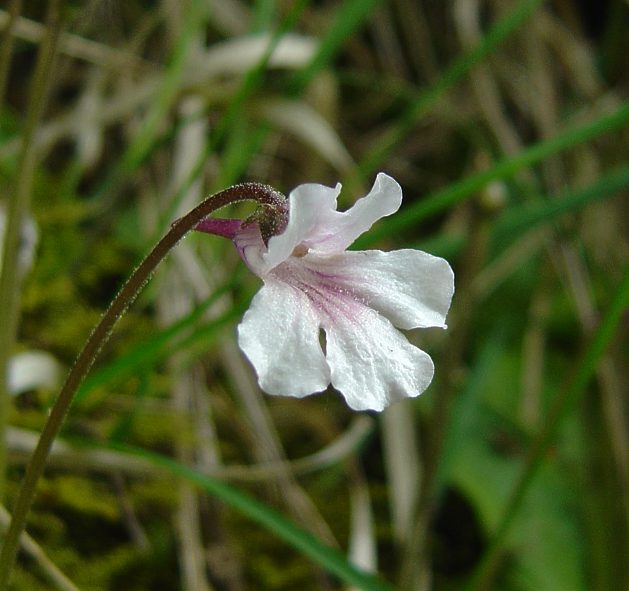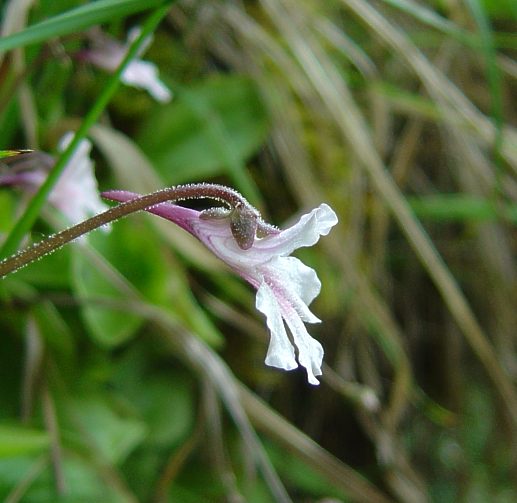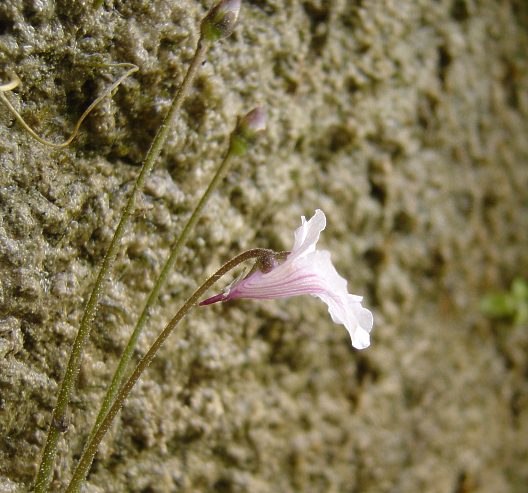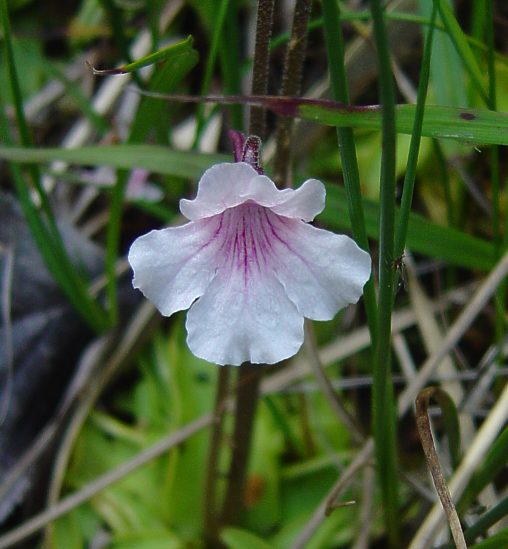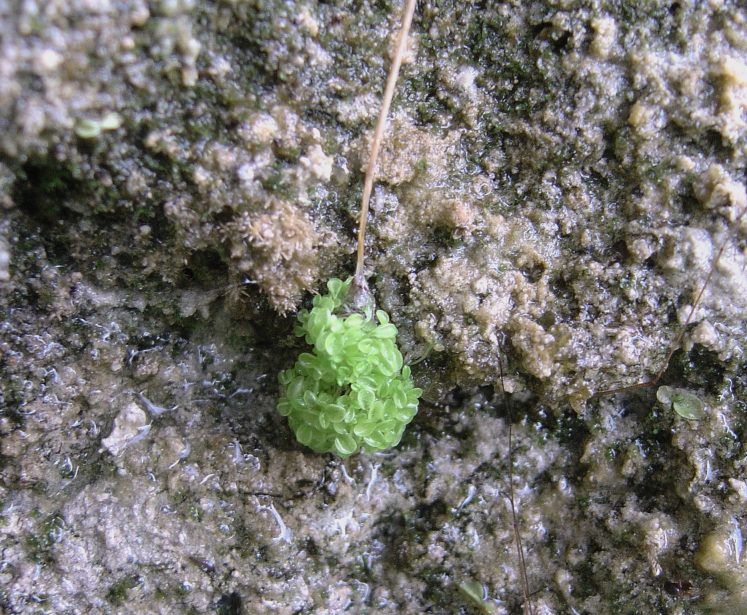
Oliver Gluch's World of Carnivorous Plants or: "What you always wanted to know about butterworts" |
| Impressum |

| Home | Origin | Prey | Species | Plant Purchase | Other Carnivorous Plants | Info about Carnivorous Plants | About me |
Pinguicula grandiflora ssp. rosea (Mutel) Casper (1962)Topographic
map
of the French Alps and the currently known locations of
populations of P. grandiflora ssp. rosea
(red dots) in the French departments Haute-Savoie and
Isère.
View
on
the hills near Sollières (with an altitude of about 1000
m), above Goncelin, north-east of Grenoble, France (in
the background the Savoyen Alps with the mountain chain
'Chaîne de Belledonne').
17th June 2004 Location
of
P. grandiflora ssp. rosea below the
village Sollières (Isère, France) with plants growing on
vertical limestone cliffs in an altitude of about 660 m
above sea level.
17th June 2004 North
facing
side of Mont Granier (1933 m a.s.l.), in the mountain
chain Massif de la Chartreuse; the current shape of the
mountain was partly caused by a huge landslide in the
year 1248; even today there are some smaller landslides
occuring due to the porous nature of the limestone (see
center of the image).
21st June 2004 Wet
meadow
with a small mountain stream; location of P.
grandiflora ssp. rosea at an altitude of
about 1000 m above sea level. At this site there is also
P. alpina and P. vulgaris growing, but
those species do occur in more drier areas.
21st June 2004 Group
of
plants growing directly on limestone rock or in moss
(location Sollières); some plants are still flowering,
but most of the plants have already formed immature seed
pods.
17th June 2004 Group
of
plants of P. grandiflora ssp. rosea
growing in mosses in a limestone soil along a small
mountain stream (location Mont Granier).
21st June 2004 Group
of
plants of P. grandiflora ssp. rosea in
flower with immature seed pods growing in direct
sunlight (location Mont Granier). In the vicinity there
is another population of P. grandiflora ssp. grandiflora
growing, but no cross pollination of the 2 populations
have been detected.
21st April 2011 Plant
in
summer rosette with just opening flower.
21st June 2004 Adult
plant
with prey covered leaves; new daughter plants (through
vegetative propagation) growing around the adult plant
(from winter buds formed in the previous autumn).
17th. June 2004 Front
view
of a flower of P. grandiflora ssp. rosea
with almost white corolla lobes and pale red-violet
veination.
17th June 2004 Semi-lateral
view
of a flower of P. grandiflora ssp. rosea.
17th June 2004 Lateral
view
of a flower P. grandiflora ssp. rosea. A
character to distinguish this subspecies from plants
of P. grandiflora ssp. grandiflora
is the shorter spur and the obtuse oval-shaped lobes of
the upper lip of the calyx.
17th June 2004 Lateral
view
of a flower of P. grandiflora ssp. rosea
with a very short spur. The still immature seed capsules
a pear shaped.
17th June 2004 Front
view
of a flower of P. grandiflora ssp. rosea
with the typical pale pinkish corolla lobes and the
red-violet veins towards the entrance of the tube. In
comparison to P. grandiflora ssp. grandiflora
the size of the corolla is smaller.
21th June 2004 Generative
propagation:
recently germinated seedlings from a seed capsule formed
in the previous year and which was laying in the
substrate the whole winter and spring before germination
occured.
17th June 2004 |
